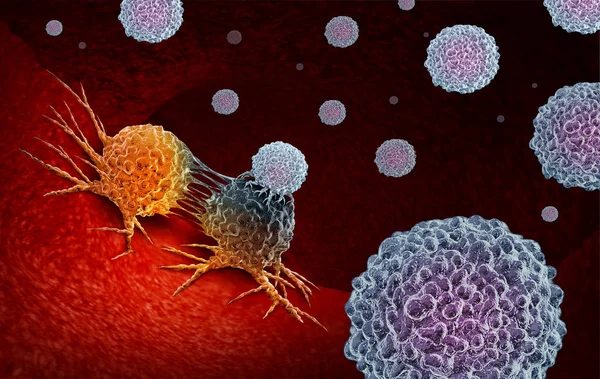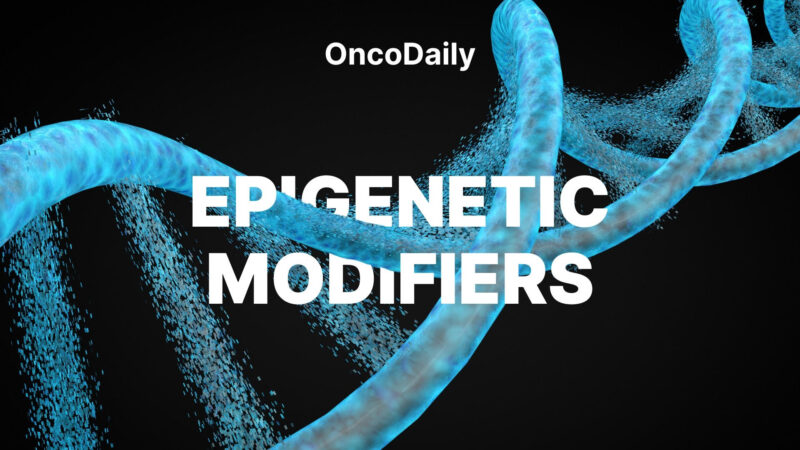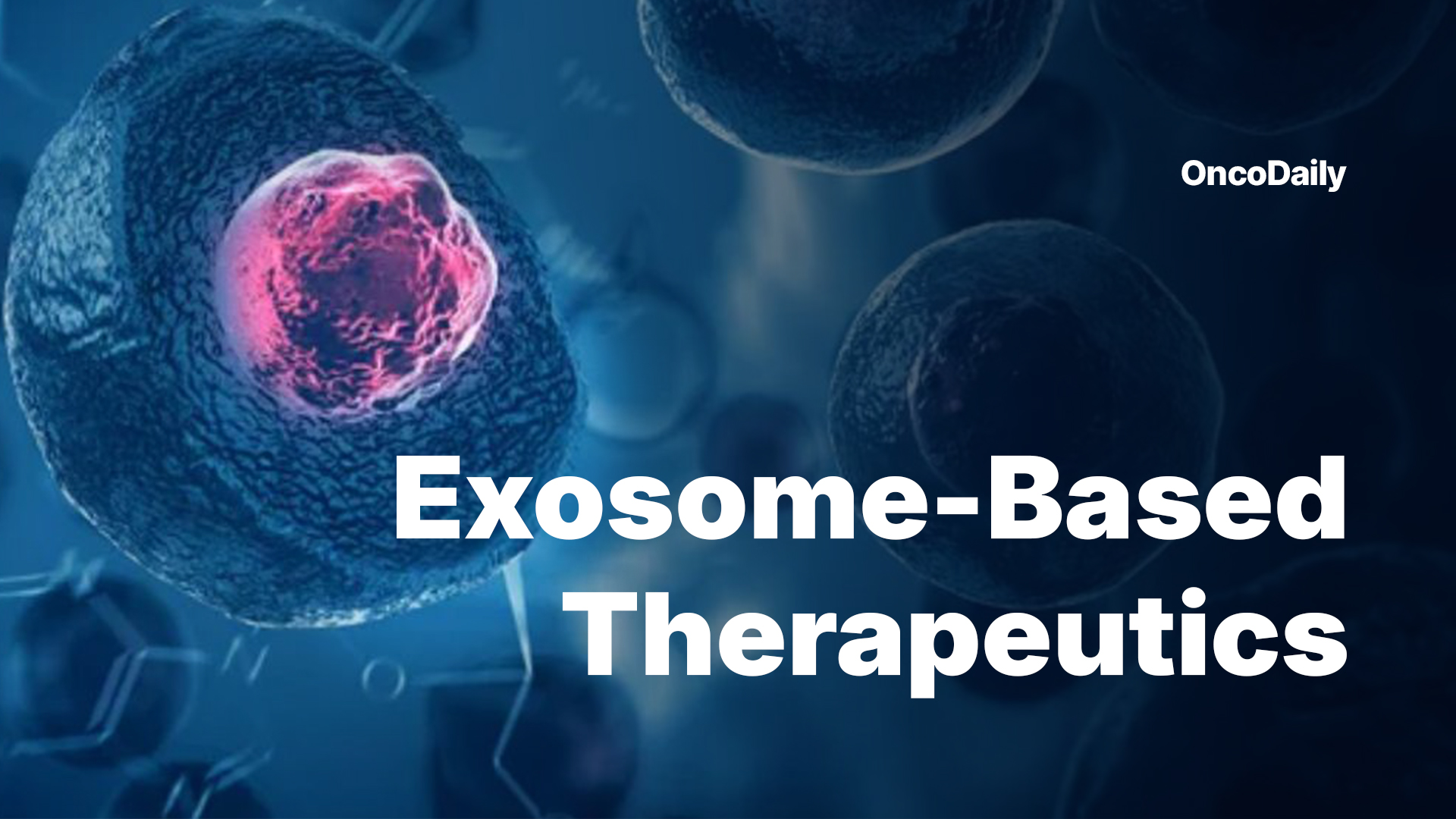Utilizing natural vesicles released by cells to deliver drugs or genetic material specifically to cancer cells or immune targets.
Imagine if the human body could send microscopic delivery trucks carrying healing messages straight to diseased cells skipping all the healthy ones along the way. This idea isn’t science fiction anymore. It’s becoming reality through something called exosome-based cancer therapy.
In this article, you’ll discover how exosome-based cancer therapy works, how these tiny vesicles recognize cancer cells, what makes them different from traditional treatments, and why scientists see them as one of the most promising tools in the future of oncology.

Photo: Depositphotos
In recent years, scientists have discovered that our cells are constantly sending tiny “messages” to one another not through words, but through small bubbles called exosomes. These microscopic packages carry important information in the form of proteins, fats, and genetic material. In healthy conditions, exosomes help cells communicate and keep the body in balance. However, cancer cells can use these same exosomes to spread harmful messages, helping tumors grow and invade new tissues.
Interestingly, researchers are now learning how to turn this system to our advantage — by using exosomes as natural carriers to deliver medicines directly to cancer cells. Because exosomes come from our own bodies, they can travel safely through the bloodstream and reach hidden tumors more easily than many traditional treatments. This natural compatibility makes exosome based cancer therapy one of the most promising and innovative approaches in the fight against cancer.
Let’s explore what exosome based cancer therapy actually is and how it could change the way we fight cancer in the future. In some clinical trials, exosome-based cancer drug carriers have shown 4–10× higher delivery efficiency to target cells compared to synthetic nanoparticles.
What Are Exosomes And How Are They Formed?
Exosomes are very small, naturally-secreted vesicles that typically range in diameter from approximately 30 to 150 nanometres (nm), with a density of 1.13–1.19 g/mL and a lipid membrane about 5 nm thick, allowing them to travel easily through biological barriers. making them considerably smaller than most cells but larger than many individual biomolecules.
Zhang Y, Bi J, Huang J, Tang Y, Du S, Li P. Exosome: A Review of Its Classification, Isolation Techniques, Storage, Diagnostic and Targeted Therapy Applications. Int J Nanomedicine. 2020 Sep 22;15:6917-6934.
Exosomes, which are small extracellular vesicles, are generated by a variety of cell types. They are spherical and tiny, with a double-layered phospholipid membrane that contains lipids, proteins, and nucleic acids. Because of their nano-scale size, exosomes can navigate through the extracellular space and even cross biological barriers, which contributes to their utility as delivery vehicles. The variation in reported size (sometimes up to ~200 nm) reflects differences in cell of origin, isolation methods, and measurement techniques. Exosomes transport physiologically active substances like proteins, microRNA, mRNA, DNA, and other compounds. Compounds contained within exosomes can also be transferred on their surfaces. Because of their tiny size, exosomes are potential delivery methods in personalised medicine.
Sakshi Rai, Suman Kumar Ray, Jagat R. Kanwar, Sukhes Mukherjee, Exosome-based therapeutics: Advancing drug delivery for neurodegenerative diseases, Molecular and Cellular Neuroscience, Volume 133, 2025, 104004, ISSN 1044-7431,
The rising popularity of exosomes as a drug delivery strategy because they can circumvent several challenges encountered by conventional approaches. Firstly, exosomes exhibit remarkable stability, biocompatibility, and minimal immunogenicity, making them an appealing choice for targeted delivery of therapeutic cargo. Secondly, they can traverse biological barriers and selectively target specific cells or tissues, thereby enhancing the delivery efficiency and reducing off-target effects. Additionally, exosomes provide a protective environment for the encapsulated cargo, safeguarding it from degradation and enhancing its stability.
Exosomes can be combined with various physiologically active compounds and other readily degraded components, making them suitable carriers for the transmission of these substances. In recent years, there has been a surge of research focused on harnessing exosomes as drug carriers. They show enormous potential as delivery systems for drugs, genetic material, and other therapeutic payloads which could be integrated into their core or incorporated into their surface by different altering approaches to optimize their intended properties.
Vriti Sharma, Chitrangada Das Mukhopadhyay, Exosome as drug delivery system: Current advancements, Extracellular Vesicle, Volume 3, 2024, 100032, ISSN 2773-0417,
How Can Therapeutic Molecules Be Loaded Into Exosomes?
There are two major categories of loading:
- Endogenous (pre-secretory) loading: loading happens inside the donor cells, before exosomes are secreted.
- Exogenous (post-secretory) loading: exosomes are first purified/isolated, then cargo is loaded onto or into them.
Below are the different techniques, how they work, and what trade-offs they have.
Pre-secretory drug loading involves loading therapeutic agents directly into parental cells or modifying parental cell genes to secrete engineered exosomes. Furthermore, presecretory drug delivery consists of two main methods: coincubation and genetic modification. Coincubation usually involves the co-culture of parental cells with a therapeutic agent (e.g., paclitaxel, gemcitabine, or adriamycin), allowing the therapeutic agent to cross the cell membrane and enter the cytoplasm. In contrast, genetic modification is performed by transfection and genetic modification of parental cells to overexpress the desired therapeutic agent (e.g., RNA or protein).
The therapeutic substance within the cytoplasm is segregated into exosomes through either active or passive mechanisms, subsequently released from the cell alongside these exosomes. The extraction technique employed ensures the acquisition of suitable exosomes. This method involves only the treatment and modification of parental cells, whereas the extracted exosomes are relatively untreated. The primary advantage is that the integrity and functionality of exosomes are better preserved, although drug-loading efficiency is difficult to control and is often low.
Post-secretory loading is the most common method of exosome loading and can be further divided into active and passive loading. The general procedure for this is first isolating and purifying the exosomes, before properly loading the therapeutic agent. Electroporation and sonication are the most commonly used active loading methods, whereas the other methods involve repeated freeze-thawing and extrusion. The advantages of this method are the relative simplicity and relatively high loading efficiency. Nonetheless, the loading procedure could potentially undermine the exosomes’ soundness, necessitating further refinement measures to eliminate any unloaded freight. Incubation, which is a passive loading method, has also been widely used in cancer research.
This method relies mainly on the principle of passive diffusion, in which hydrophobic drugs pass through the exosomal membrane down a concentration gradient without harming the integrity of the exosomal membrane. However, the limitations of incubation are also obvious, namely, the low drug-loading rate. The drug loading efficiency of exosomes may be influenced by the drug’s hydrophobicity, method of drug loading, and lipid composition of exosomes. Therefore, in practical applications, a suitable drug-loading method must be selected based on the physicochemical properties of the drug.
Yang, Q., Li, S., Ou, H. et al. Exosome-based delivery strategies for tumor therapy: an update on modification, loading, and clinical application. J Nanobiotechnol 22, 41 (2024). https://doi.org/10.1186/s12951-024-02298-7
How Do Exosomes Recognize And Target Cancer Cells?
As potential biological material transporters, exosomes are usually composed of a series of biomolecules, including proteins, short-chain peptides, lipids, and fragments of DNA, mRNA, and microRNA (miRNA). The components of exosomes are closely related to the source and pathophysiological state of the secretory cells.
Based on traditional methods, such as SDS-PAGE and proteomic analysis, the proteins of exosomes have been mainly divided into two types, one of which includes common proteins distributed in every exosome, such as transmembrane transport and integration-related proteins (e.g., G protein, annexin, flotillin), tetraspanins (CD9, CD63, CD81, CD82) and heat shock proteins (Hsp70, Hsp90).
In particular, CD9 and CD63 are often used as molecular markers of exosomes that can be identified from a variety of extracellular vesicle-like structures, such as MVBs or apoptotic bodies; however, exosome-specific proteins have yet to be discovered. The other protein type includes proteins that exist in specific types of exosomes; for example, MHC and costimulatory CD80 or CD86 molecules are abundant in exosomes surface originating from DCs and B lymphocytes, and a number of tumor antigens are contained in tumor cell-derived exosomes.
In addition to proteins, exosomes are also rich in lipids. The lipid components of exosomes are different from those of the cell membrane. Compared to their parent cells, exosomes is consist of phosphatidylserine, double-unsaturated phosphatidylethanolamine, double-unsaturated phosphatidylcholine, sphingomyelin, ganglia glycoside GM3, and cholesterol. This unique combination is beneficial not only for maintaining high exosome stability but also for facilitating uptake by recipient cells.
Furthermore, exosomes contain a variety of non-coding RNAs or fragments, including overlapping protein-coding region RNA transcripts, repeats, structural RNAs, fragments of transfer RNAs, short hairpin RNAs, Y RNAs and small interfering RNAs (siRNAs). RNAs isolated from exosomes are more enriched than those in parental cells, which further demonstrates the selectivity of RNA incorporation into exosomes. Many studies have detected abnormal miRNA expression in exosomes isolated from the body fluids of patients with various types of cancer, suggesting that miRNAs have potential as diagnostic and prognostic biomarkers.
Xu, W., Yang, Z. & Lu, N. From pathogenesis to clinical application: insights into exosomes as transfer vectors in cancer. J Exp Clin Cancer Res 35, 156 (2016).
Exosomal surface molecules play a crucial role in determining the specificity with which exosomes recognize and bind to cancer cells. Proteins such as tetraspanins (CD9, CD63, CD81, CD82) and transmembrane proteins (like flotillin and annexin) help mediate cell–cell communication and membrane fusion between exosomes and target cells. Moreover, tumor-derived exosomes often display tumor-specific antigens or adhesion molecules on their surface that selectively interact with corresponding receptors on cancer cells, enabling homing to tumor tissues.
Similarly, immune-related surface molecules such as MHC, CD80, and CD86 can facilitate recognition through ligand–receptor binding with immune or tumor cell receptors. These molecular interactions allow exosomes to bind preferentially to cancer cells, deliver their molecular cargo (such as RNA or drugs), and influence tumor progression, immune modulation, or therapeutic response.
What Are The Main Advantages Of Exosome-based Therapies Compared To Traditional Drug Delivery Systems?
Nowadays, the study of exosomes has become increasingly popular in molecular technology research. However, the precise roles of exosomes produced by various cell types remain unclear and require further investigation. Consequently, many studies have focused on elucidating the functions of exosomes derived from specific cells, such as macrophages, rhabdomyosarcoma (RMS) cells, metastatic cancer cells, malignant mesothelioma (MM) cells, osteoclasts, pancreatic cancer cells (PCCs), bronchial fibroblasts, and mesenchymal stem cells.
Using cell-derived exosomes for drug delivery offers significant advantages, as exosomes originating from a specific progenitor cell can deliver therapeutic cargos to corresponding target cells. Among them, macrophage-derived exosomes are considered particularly effective due to their favorable delivery properties.
Beyond exploring the biological roles of exosomes, numerous studies have also investigated their application as delivery vehicles for targeted therapy. It has been demonstrated that their delivery efficiency can be further enhanced through surface modification techniques.
In summary, exosomes represent one of the most promising and competitive nanocarriers for drug delivery, whether used in their natural or modified forms. Naturally derived exosomes possess inherent roles in cell–cell communication, granting them valuable delivery capabilities. Nonetheless, the development of engineered exosomes also holds great potential for future drug delivery applications. Continued research is essential to improve characterization methods and standardize production processes for both natural and modified exosomes in therapeutic use.
Bunggulawa, E.J., Wang, W., Yin, T. et al. Recent advancements in the use of exosomes as drug delivery systems. J Nanobiotechnol 16, 81 (2018).
What Challenges Limit The Clinical Use Of Exosome Therapeutics?
Exosomes or so-called natural nanoparticles have recently shown enormous potential for targeted drug delivery systems. Several studies have reported that exosomes as advanced drug delivery platforms offer efficient targeting of chemotherapeutics compared to individual polymeric nanoparticles or liposomes. Taking structural constituents of exosomes, viz., proteins, nucleic acids, and lipids, into consideration, exosomes are the most promising carriers as genetic messengers and for treating genetic deficiencies or tumor progression. Unfortunately, very little attention has been paid to the factors like source, scalability, stability, and validation that contribute to the quality attributes of exosome-based drug products.
Some studies suggested that exosomes were stable at around −80 °C, which is impractical for storing pharmaceutical products. Currently, no reports on the shelf-life and in vivo stability of exosome formulations are available. Exosomes are quickly cleared from blood circulation, and their in vivo distribution depends on the source. Considering these challenges, further studies are necessary to address major limitations such as poor drug loading, reduced in vivo stability, a need for robust, economical, and scalable production methods, etc., which may unlock the potential of exosomes in clinical applications.
Srivatsa Palakurthi S., Shah B., Kapre S., Charbe N., Immanuel S., Pasham S., Thalla M., Jain A., & Palakurthi S. A comprehensive review of challenges and advances in exosome-based drug delivery systems. Nanoscale Advances, 2024.
You Can Also Read Epigenetic Modifiers in Cancer Therapy: Unlocking New Treatment Pathways by OncoDaily

What Is The Current Progress And Future Potential Of Exosome-based Cancer Treatments?
In prostate cancer, glioblastoma, breast cancer and other tumors, exosomes have been confirmed to be closely associated with tumor cell proliferation. The underlying mechanisms can potentially be used as targets for cancer therapeutics.
Exosomes affect heterogeneous cells in the microenvironment by transferring a cancerous phenotype and inducing cells to undergo malignant transformation; thus, exosomes play an important role in cancer progression. For example, exosomes in the serum of breast cancer patients were injected into mice together with normal epithelial cells and ultimately induced the formation of tumors in mice, while exosomes derived from normal subjects did not have this capability. Exosomes secreted from prostate cancer cells are able to transform adipose stem cells into cancer cells possibly induced by their cargo of proteins, mRNA and miRNAs.
The epithelial-to-mesenchymal transition (EMT) is a highly conserved biological process by which cells lose epithelial and gain mesenchymal characteristics, including changes in cell morphology and phenotype. This process is the initial step in tumor cell invasion and distant metastasis. Functional studies have shown that exosomes use these bioactive components to induce the formation of a pro-metastatic phenotype in recipient cells. After the occurrence of the EMT, tumor cells have enhanced invasion and metastasis capabilities and a high level of malignancy, leading to a significantly worse prognosis.
Moreover, exosomes released by tumor cells can also change the physiological status of both the surrounding tissue and distant cells, indirectly contributing to the growth and spread of cancer cells, e.g., by stimulating vascular permeability or adjusting the local environment of organs before metastasis occurs.
Xu, W., Yang, Z. & Lu, N. From pathogenesis to clinical application: insights into exosomes as transfer vectors in cancer. J Exp Clin Cancer Res 35, 156 (2016).
Written by Anahit Mkrtchyan
FAQ
How are exosomes connected to cancer?
Cancer cells can release exosomes that help them grow, spread, and even hide from the immune system — but scientists are learning how to use them against cancer instead.
Why are exosomes better than traditional drug delivery methods?
Because they come from our own cells, exosomes can travel through the body safely and reach cancer cells more precisely, reducing side effects.
Are exosome therapies already available for patients?
Not yet widely. Most are still in the research or clinical trial stages, but early results look very promising.
Can exosomes be made from my own cells?
Yes — in some studies, researchers collect exosomes from a patient’s blood or stem cells to create personalized treatments.
Do exosome therapies cause any side effects?
So far, they seem to be well tolerated, but more studies are needed to understand long-term effects and safety.
How do exosomes find and target cancer cells?
Exosomes carry surface proteins that help them “recognize” and bind to specific cells, including cancer cells with matching markers.
What makes scientists so excited about exosome-based treatments?
They offer a natural, precise, and potentially safer way to treat complex diseases — including cancers that are hard to reach with traditional drugs.
When will this therapy be available for patients worldwide?
It depends on the results of ongoing clinical trials. It may take several more years before it’s approved for regular use.
What makes scientists so excited about exosome-based treatments?
They offer a natural, precise, and potentially safer way to treat complex diseases — including cancers that are hard to reach with traditional drugs.
